“There was in their city a bronze image of KRONOS, extending its hands, palms up and sloping toward the ground, so that each of the children when placed thereon rolled down and fell into a sort of gaping pit filled with fire.”
— Diodorus Siculus, The Library of History XX:14
The Wolves Within is a must-read for every believer who refuses to be deceived.
Hit the Tip Jar and help spread the message!
This post contains affiliate links, which means I may receive a commission or affiliate fee for purchases made through these links.
Unlock the mysteries of Biblical cosmology and enrich your faith with some of the top rated Christian reads at BooksOnline.club.
Click the image below and be sure to use promo code SCIPIO for 10% off your order at HeavensHarvest.com: your one stop shop for emergency food, heirloom seeds and survival supplies.
Related Entries
In the pantheon of ancient pagan deities, few evoke such visceral horror as Kronos, or Saturn — the devourer of children.
The image of this dark god, seated upon his throne while his worshipers offer up innocent lives, casts a long shadow over the cradle of civilization. To many ancient cultures, the cries of infants were the price of favor and prosperity, and their blood stained the altars of nations far and wide. From the high places of Canaan to the brazen idols of Carthage, the ritualized slaughter of infants was seen not as a tragedy, but as the ultimate expression of one’s devotion.
The worship of Saturn was once widespread, and the ancient Near East saw a myriad of manifestations of this entity (emphasis mine):
Textual evidence from ancient Mesopotamia identifies Kronos as the Phoenician Baal Hammon, and the earlier Mesopotamian deities Kumarbi (Hurrians), El (Canaan), Dagan (Amorites and Philistines), Assur (Assyria), and Enlil (Akkad and Sumer). All of them, from Kumarbi to Enlil, have their origins in northwest Syria or southeast Turkey, in an area generally bounded on the south by Jebel Bishri in northeast Syria and the Amanus mountains in southern Turkey. And that’s precisely the region that eventually produced the Amorites and the tribe from which the Amorite kings of Babylon claimed descent, the Tidanu/Ditanu, which apparently took the name of the old gods called “Titans” by the later Greeks.
— Derek P. Gilbert, The Second Coming of Saturn
I have previously discussed the history of the nephilim — of which the Amorites numbered — in my essay BC III: What is a Giant? Part I. Nevertheless, the strong textual and historical connections linking the Amorites to the genesis of the Saturnian cultus are impossible to ignore.
The pagan deity Moloch is connected to Baal in Jeremiah 32:35, where it is said: “They have built the high places of Baal in the Valley of Hinnom to sacrifice their sons and daughters to Moloch.” Baal, Moloch, and Saturn, gods of death & time, demanded the same price — the blood of the innocent. Ancient writers widely accepted that these gods were different names for the same being, with parallel myths of vengeful fathers devouring their children whilst paired with cultic infant sacrifice.
Roman historians like Tacitus and Cassius Dio recorded these ghastly rites practiced by their implacable Phoenician foes, although the most chilling tale of these rituals comes from the pen of the Greek historian Plutarch (emphasis mine):
Would it not then have been better for those Gauls and Scythians to have had absolutely no conception, no vision, no tradition, regarding the gods, than to believe in the existence of gods who take delight in the blood of human sacrifice and hold this to be the most perfect offering and holy rite? … rather than to offer such sacrifices as they used to offer to Cronos? …
No, but with full knowledge and understanding they themselves offered up their own children, and those who had no children would buy little ones from poor people and cut their throats as if they were so many lambs or young birds; meanwhile the mother stood by without a tear or moan; but should she utter a single moan or let fall a single tear, she had to forfeit the money, and her child was sacrificed nevertheless; and the whole area before the statue was filled with a loud noise of flutes and drums so that the cries of wailing should not reach the ears of the people.
— Plutarch, De superstitione (ca. 110 AD), Chapter 13
The ancient testimonies of Carthaginian child sacrifice, thought disputed by some scholars, is nonetheless consistent across the centuries.
The breeding and purchasing of infants for the express purpose of use as human sacrifices is recorded as well, with Carthage running one of the most lucrative slave trades of the ancient world. Ancient Greek sources spoke of the Phoenicians as expert traders and seafarers, but their spiritual legacy is far darker:
Children – both male and female, and mostly a few weeks old – were sacrificed by the Carthaginians at locations known as tophets. The practice was also carried out by their neighbours at other Phoenician colonies in Sicily, Sardinia and Malta. Dedications from the children's parents to the gods are inscribed on slabs of stone above their cremated remains, ending with the explanation that the god or gods concerned had 'heard my voice and blessed me'.
Patristic writer and Christian apologist Tertullian notes that “Children were openly sacrificed in Africa to Saturn as lately as the proconsulship of Tiberius... And even now that sacred crime still continues to be done in secret.” (Apologeticum, 9.2-3)
— Saturn (1636), ill. by Peter Paul Rubens.
But this was not merely a Carthaginian phenomenon, as Saturn continued to be worshipped through human sacrifices well after the fall of Carthage & subsequent Phoenician diaspora (emphasis mine):
Macrobius reports (1.7) that in the earliest memories of the Italic peoples, Saturn was worshipped with human sacrifices; …
Versnel has discussed the considerable evidence that the gladiatorial games were carried out as ritual observances (munera) to Saturn. … The Greeks too performed human sacrifices to Cronos on the day of his festival, the Cronia. Pophyry reports that in the city of Rhodes, on the day of the Cronia, a criminal was taken to the gates of the city, given alcohol, and then slaughtered.
— Arthur Moros, The Cult of the Black Cube: A Saturnian Grimoire
The ancient Hebrews — during their numerous periods of idolatry — would find themselves entangled in many of these same practices that their Greek, Roman, and Canaanite neighbors indulged in.
The Canaanites would come to be called Phoenicians by the Greeks (emphasis mine):
The Old Testament never actually mentions Phoenicians. The only reference to that name is in ancient Greek writings, and they were referring to merchants living in cities along the coast of modern-day Lebanon.
In other words, the "Phoenicians" mentioned by the ancient Greeks were part of what the biblical authors called "Canaanites", in terms of archaeology, religion and language. There was not much setting them apart from other Semitic cultures.
— Phillippe Bohstrom, Did the Phoenicians Even Exist?
These connections therefore raise a profound and disquieting question: was the worship of Yahweh — the God of Abraham, Isaac, & Jacob — merely a divergent manifestation of the surrounding Canaanite practices (as modern skeptics suggest)?
Or, rather, are these connections the very proof that ancient Israel found itself perilously entwined with the blood-soaked altars of Saturn, as Scripture records — an influence which never fully died out?
“And thou shalt not let any of thy seed pass through the fire to Molech, neither shalt thou profane the name of thy God: I am the LORD.”
— Leviticus 18:21 KJV
To address this question, we must first examine the religious and ethnic landscape of the ancient Near East.
In the early centuries of Israel’s monarchy, there was a time when the kingdoms of Israel and Tyre were closely linked — politically, economically, and even spiritually (emphasis mine):
The Phoenicians were the late Canaanites of the first millennium B.C.E. (Iron Age through Roman period), descendants of the Canaanites of the second millennium B.C.E. (Middle Bronze Age through Late Bronze Age). “Phoenicians” was the name given to this people by the Greeks, but the Phoenicians continued to refer to themselves as Canaanites or by the names of their principal cities. During the second millennium B.C.E., the Canaanites controlled Palestine, Transjordan and Syria — from Ugarit down to the Egyptian border — and they developed a rich culture. Around 1200 B.C.E., they were forced out of these countries by the Arameans and the Neo-Hittites in the north, the Israelites and the Sea Peoples (Philistines, Sikils and Sherden, etc.) in the south, and by the Ammonites, Moabites and Edomites in the east. Between about 1200 and 1050 B.C.E., they retained control of a greatly reduced area — the narrow coastal strip of Lebanon between Arwad, Tyre and Akko. Most of the population lived in five main cities: Arwad, Byblos, Berytus, Sidon and Tyre.
— Ephraim Stern, Phoenicia and Its Special Relationship with Israel
As the dominant people in the region, their influence extended beyond their coastal cities. Before it was an ocean spanning empire, the city-state of Carthage was a Phoenician colony located in what is now Tunisia. It operated from ~800BC until 146BC, when it was destroyed by Roman armies at the end of the Third Punic War.
The Phoenicians, who were in reality Canaanites, shared more than just geographic proximity with Israel — they engaged in numerous political alliances during the beginning of the Davidic dynasty. In 2nd Samuel 5:11, we see the alliance between King David and Hiram, king of Tyre: “And Hiram king of Tyre sent messengers to David, and cedar trees, and carpenters, and masons: and they built David a house." This relationship was not merely diplomatic, but became foundational in the construction of Israel’s first temple. With its wealth, craftsmen, and resources, Tyre played a significant role in helping to build the house of Yahweh. 1st Kings 5 further elaborates on this, showing the agreement between Hiram and Solomon to exchange labor and resources.
Initially, Tyre’s contributions to Israel were positive: they provided essential materials for the construction of the First Temple, ensuring that Solomon could build a house for the Name of the Lord. But it was those same foreign alliances which became the entry point for spiritual ruin as Solomon gradually succumbed to the influence of Tyrian idolatry. 1st Kings 11 recounts Solomon’s tragic fall (emphasis mine):
4 For it came to pass, when Solomon was old, that his wives turned away his heart after other gods: and his heart was not perfect with the Lord his God, as was the heart of David his father.
5 For Solomon went after Ashtoreth the goddess of the Zidonians, and after Milcom the abomination of the Ammonites.
6 And Solomon did evil in the sight of the Lord, and went not fully after the Lord, as did David his father.
7 Then did Solomon build an high place for Chemosh, the abomination of Moab, in the hill that is before Jerusalem, and for Molech, the abomination of the children of Ammon.
8 And likewise did he for all his strange wives, which burnt incense and sacrificed unto their gods.
— 1st Book of the Kings 11:4-8 KJV
It is almost too horrible to contemplate the defilement of the First Temple with these sacrifices. Canaanite idolatry had now infected Israel at its highest levels, and Solomon's profound spiritual debauchery marked the beginning of the nation of Israel’s eventual slide into idolatry. It would ultimately end in civil war, destruction, and exile.


— Artistic renderings of Molochian idols.
We must naturally then turn our attention to the subsequent perversion of the Hebraic faith during the Second Temple era.
After their return from the first Babylonian exile, the tribes of Israel quickly fell back into the same sins that had contributed to their downfall. Despite the clear warnings and consequences of their prior disobedience, the people of Israel began marrying foreign wives again, leading to a fresh wave of spiritual corruption. The prophet Ezra is so appalled by this that he rends his garments and rips out his hair (Ezra 9). Similarly, Nehemiah 13:23-27 recounts how Nehemiah confronted those who had married foreign women, hearkening back to Solomon’s downfall: “Did not Solomon king of Israel sin by these things? Yet among many nations was there no king like him… nevertheless even him did outlandish women cause to sin.” Despite their restoration to the land, much of the tribes of Israel quickly fell into the same pattern of rebellion they had grown so accustomed to.
The most prominent religious faction to emerge later in the Second Temple period were the Pharisees, who outwardly appeared to be the most devout followers of Yahweh — in truth, they were the spiritual descendants of Babylon. Christ Himself exposes their hypocrisy in Matthew 23: "Woe unto you, scribes and Pharisees, hypocrites! for ye compass sea and land to make one proselyte, and when he is made, ye make him twofold more the child of [Gehenna] than yourselves" (Matthew 23:15). Their version of righteousness was a hollow legalism, a façade, while underneath they despised the true heart of the Law.
These so-called “keepers” of the Law were, in reality, antinomians — haters of the very law they professed to uphold. The Pharisees nullified God’s commandments for the sake of their own oral traditions, which Jesus lambasts them for in Mark 7 (emphasis mine):
9 And he said unto them, Full well ye reject the commandment of God, that ye may keep your own tradition.
10 For Moses said, Honour thy father and thy mother; and, Whoso curseth father or mother, let him die the death:
11 But ye say, If a man shall say to his father or mother, It is Corban, that is to say, a gift, by whatsoever thou mightest be profited by me; he shall be free.
12 And ye suffer him no more to do ought for his father or his mother;
13 Making the word of God of none effect through your tradition, which ye have delivered: and many such like things do ye.
— The Gospel of Mark 7:9-13 KJV
The Pharisees, with all their outward displays of piety, were in fact nullifying the 5th commandment — the very law they claimed to defend.
But their corruption ran deeper still. These men were not simply wayward legalists: they were carrying forward the spiritual infection of Babylon itself, which I have explored in a previous essay:
…the only symbol Biblically associated with ancient Israel was the Menorah, described by God in Exodus 25. The hexagram as a representation of the House of David can be found no where in Holy Scripture. The only star mentioned in the Old Testament that does not refer to an angel or Israel is from the Book of Amos, referenced when he is denouncing the idolaters of Judea (emphasis mine):
But ye have borne the tabernacle of your Moloch and Chiun your images, the star of your god, which ye made to yourselves. Therefore will I cause you to go into captivity beyond Damascus, saith the Lord, whose name is The God of hosts.
This same demonic star is spoken of in Acts by a deacon of the Jerusalem church and the first martyr, Stephen:
Yea, ye took up the tabernacle of Moloch, and the star of your god Remphan, figures which ye made to worship them: and I will carry you away beyond Babylon.
Remphan was another name for Chiun (or Kiyyun in Greek), the Assyrian name for Saturn.
…Stephen in Acts prophesied that the idolatrous Pharisees would be carried off beyond even Babylon, a prophesy that would come true with the Jewish diasporas of the First and Second century. It is in Babylon where the Talmud, the oral tradition of the Pharisees, would finally be written down and codified. The Talmud is nothing less than the continuation and perpetuation of the oral tradition that Jesus devoted a significant portion of His ministry denouncing as a satanic deception.
— The occult talisman of Saturn, emblazoned with a pentagram and a hexagram — the Star of Remphan.
“9 Then saith the woman of Samaria unto him, How is it that thou, being a Jew, askest drink of me, which am a woman of Samaria? for the Jews have no dealings with the Samaritans.
10 Jesus answered and said unto her, If thou knewest the gift of God, and who it is that saith to thee, Give me to drink; thou wouldest have asked of him, and he would have given thee living water.”
— The Gospel of John 4:9-10 KJV
These facts lend themselves to a staggering and theologically weighty possibility as we begin to explore the enduring Saturnian influence within modern Judaism — could it be that some Phoenicians, perhaps even those from fallen Carthage, were absorbed into Hebraic culture, bringing with them remnants of their Saturn-worshiping past? Could this explain the festering elements of antinomianism and spiritual corruption that Christ lambasted in the religious leaders of His day? While this cannot be proven conclusively, it would shed light on the deep seeded tensions within the Hebraic people as they wrestled with these foreign influences — particularly those from their Canaanite and Phoenician neighbors.
The idea of mass conversions of Semitic peoples into the Old Covenant is more plausible than one might consider. In Josephus’ Antiquities of the Jews (13.9.1), he recounts the forced conversion of the Idumeans under John Hyrcanus in the 2nd century BC, illustrating how Edomites were brought into the Old Covenant through coercion and voluntary conversion (Deuteronomy 23:7-8). Just as the Edomites adopted Hebraic customs, so too could Phoenicians and their Carthaginian kin have assimilated into Hebraic society. Furthermore, the books of both Esther and Jonah show that gentiles were readily accepted into the fold, even under the Old Covenant. The lineage of Christ itself is a testament to this reality — He descends from Rahab, a Canaanite (Joshua 6:25, Matthew 1:5), and Ruth, a Moabitess (Ruth 1:4, Matthew 1:5).
One could not have a clearer indication that “Jewish” identity has always transcended mere bloodline.
— Jonah Preaching to the Ninevites (Jonah 3:4-5), ill. by Gustave Doré.
What then of the Pharisees? In Matthew 23:15, Jesus Himself notes their missionary zeal: "For ye compass sea and land to make one proselyte… ." This observation is damning, not just for its indictment of the Pharisees' hypocrisy, but for the deeper truth it unveils — there was indeed a concerted effort to evangelize foreign converts, even those from the former regions of Phoenicia and Carthage. The Phoenicians, once entrenched in their Saturnine worship but suffering a devastating blow at the hands of the Romans, would have been ripe targets for this proselytizing mission.
What we do know for certain is this: “Jewishness,” as it were, has never been about race, but about faith, about covenant (Romans 9:6-8). And yet, as history has shown, the danger lies not in the inclusion of repentant foreign converts, but in the unrepentant importation of pagan practices. The Carthaginian theory offers a speculative yet thought-provoking explanation for the syncretism that plagued ancient Israel and persists in Rabbinic Judaism.
The Hebraic religion, since the days of Moses, has been about faith in the I AM and adherence to His covenant, not ethnic purity (Exodus 12:48-49).
“37 Yea, they sacrificed their sons and their daughters unto DEVILS,
38 And shed innocent blood, even the blood of their sons and of their daughters, whom they sacrificed unto the idols of Canaan: and the land was polluted with blood.”
— Psalm 106:37-38 KJV
Therefore, to suggest that Yahweh is some malevolent demiurge or cosmic tyrant is not only the height of theological illiteracy, but the product of a thoroughly paganized imagination incapable of distinguishing truth from absurdity.
The evidence could not be clearer: Jesus not only identifies as Yahweh, but He applies the Psalms — songs of worship and adoration to Yahweh — to Himself. Take Psalm 8:2 (LXX), which speaks of infants praising God: “Out of the mouth of babes and sucklings hast thou perfected praise, because of thine enemies; that thou mightest put down the enemy and avenger.” In Matthew 21:16, Jesus responds to the Pharisees complaints by directly applying this Psalm — meant for Yahweh — to Himself, effectively declaring that the praise directed at Him is not only valid but divinely ordained.
Here is the crux of the matter: worship, according to the Scriptures, is something that belongs solely to God. To receive worship is to claim divinity. And Jesus does just that — not once, but repeatedly. In John 9:38, after healing the blind man, the man responds, “Lord, I believe,” and he worships the Messiah. There is no rebuke from Jesus. There is no refusal to accept what is reserved for God alone. Instead, Jesus receives it fully because He is Yahweh in the flesh.
The Psalms continue to testify to this reality. Psalm 110:1 states “The LORD said unto my Lord, Sit thou at my right hand, until I make thine enemies thy footstool.” Jesus cites this in Matthew 22:44 to silence the Pharisees, identifying Himself as the “Lord” to whom Yahweh speaks. The Biblical texts do not speak of Jesus as some lesser deity or created being — they speak of the Messiah as the one who shares in Yahweh’s reign, the one who sits at His right hand. As the Scriptures identify, this is the Christ — the very incarnation of Yahweh’s hypostasis on Earth and the brightness of His Glory (Hebrews 1:1-3).
— The Cube I, digital art, 2024.
The assumption that just because the names of ancient gods are similar means the referent must be the same is a glaring example of the word concept fallacy. This is akin to arguing that because an animal has four-legs and fur it must be the same thing: by this remedial logic, a donkey and a racehorse are the same creature. To assert that Yahweh is no different than a pagan demiurge is as foolish as suggesting that because both a lion and a housecat have fur and claws, they are the same animal. Just because pagan myths refer to creator deities or use a name in which Yahweh identifies Himself, such as El, does not mean they are referring to the same deity.
In his book Jesus Among the Gods, Michael F. Bird dismantles such absurdities by showing that Jesus Christ is a distinctly Hebraic figure rooted in the Old Testament. Conservatively, there are some 60 different Old Testament verses directly quoted by Christ, with over 200 allusions across the four Gospels. Christ did not come as some syncretistic figure, a melting pot of pagan myths and esoteric doctrines. No, Jesus directly identifies Himself with Yahweh — the God of Abraham, Isaac, and Jacob.
This syncretistic concoction of Yahweh as an evil demiurge is nothing more than recycled Gnostic heresies, attempting to slander the name of the Living God by conflating Him with pagan myths.
From Genesis to Revelation, the Bible denounces the rituals of the Canaanites, Phoenicians, and all those who offer sacrifices to false gods like Saturn. These rites, which so often required the blood of innocents, are condemned as an abomination before the LORD. Old & New Testament prophets alike repeatedly cried out against these pagan practices and beliefs.
The Bible does not obscure the tragic reality that national and ethnic Israel, for long periods of its history, became entangled in these same rituals. Baal, whose rituals mirrored those of Saturn, demanded the same appalling sacrifice: the lives of the innocent. Jeremiah’s prophetic utterances ring with righteous anger as he condemns those who offered their children to Baal, with The LORD declaring that (emphasis mine):
They have built also the high places of Baal, to burn their sons with fire for burnt offerings unto Baal, which I commanded not, nor spake it, neither came it into my mind:
— The Book of Jeremiah 19:5 KJV
These are not the practices of a people following Yahweh, but a people in rebellion against Him.
Talmudic Judaism, having strayed from the God of the Bible after their rejection of Him in the flesh, has clearly grappled with the infiltration of these ancient, Saturnian ideas. The true worship of Yahweh as laid out in Scripture stands in stark contrast to the influences that have crept into Jewish though both pre & post-Crucifixion. The very existence of Saturnian idolatry and astrology within Judaism is a tragic reminder of how far some have drifted in that rebellion.
What is indisputable is that the Saturnian cultus and the Mystery religion (barring that faithful remnant) has thoroughly polluted much of Jewish thought, albeit in varying degrees, for the last three millennia.
Continued in Part II…
“For one might say that these daemons are those GIANTS, and that their spirits have been deified by the subsequent generations of men, and that their battles, and their quarrels among themselves, and their wars are the subjects of these legends that are told as of gods.”
—Eusebius, Preparation for the Gospel 5.4
The Wolves Within is a must-read for every believer who refuses to be deceived.
Hit the Tip Jar and help spread the message!
This post contains affiliate links, which means I may receive a commission or affiliate fee for purchases made through these links.
Unlock the mysteries of Biblical cosmology and enrich your faith with some of the top rated Christian reads at BooksOnline.club.
Click the image below and be sure to use promo code SCIPIO for 10% off your order at HeavensHarvest.com: your one stop shop for emergency food, heirloom seeds and survival supplies.


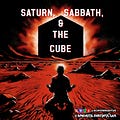


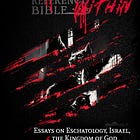
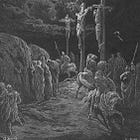


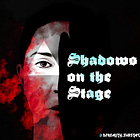





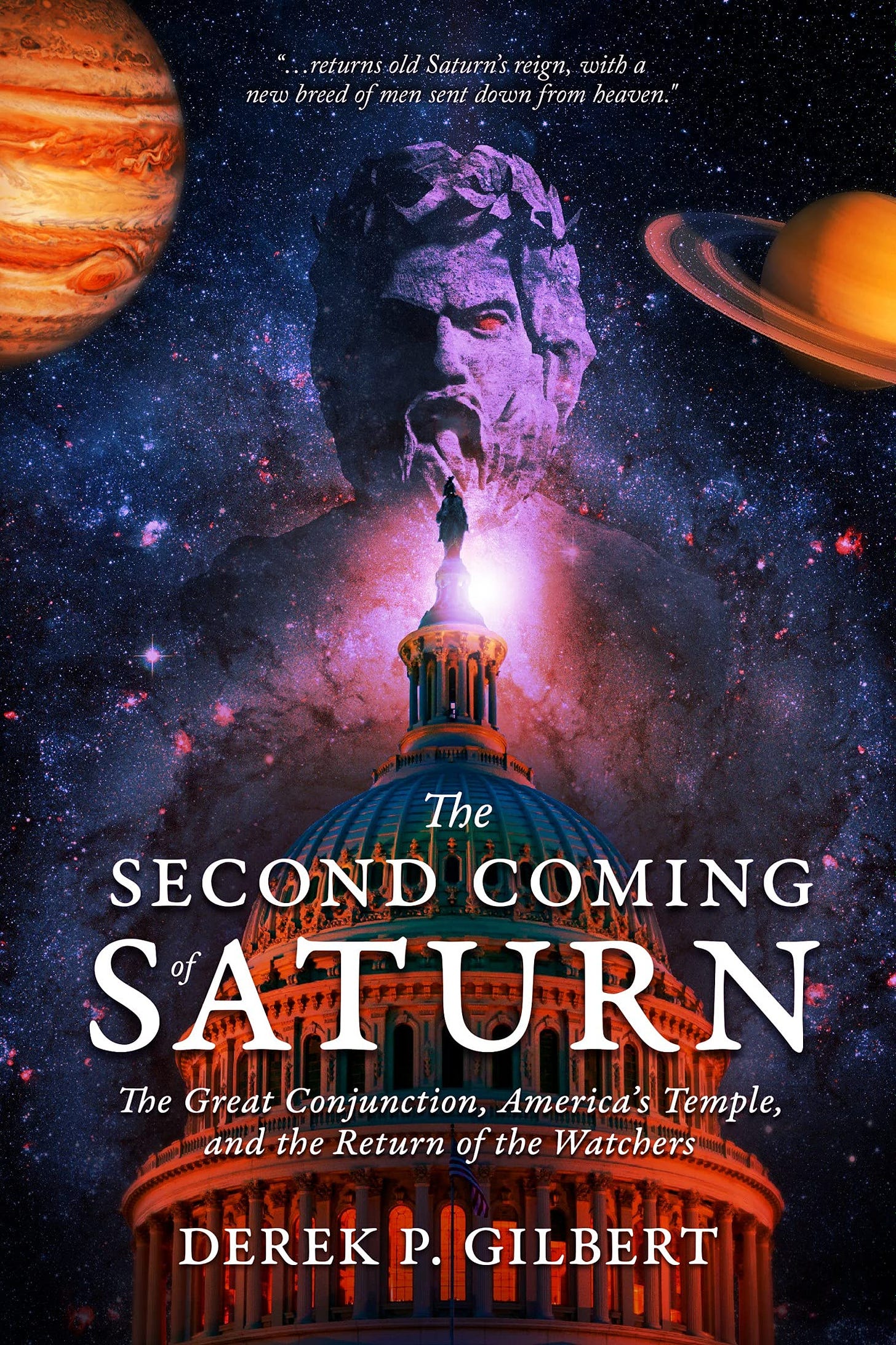

Phoenicians are as enigmatic as the so-called 'Sea Peoples' that anthropologists talk about. Even the Philistines originated from the Greek Isles, apparently with their giant / nephilim DNA. Maybe they were all the same group. Canaan seems to have been a crossroads or melting pot inbetween the two civilzations of Babel / Sumer and Egypt, the perfect place for Satan to use his Principalities to let these cults fester. All those different variants of the same basic 'gods'.
There are a couple of notable parts of God's plan that we tend to overlook. The first is the disobedience of Shem, Ham, and Japheth in NOT spreading throughout the Earth, of which the cursing of Canaan seems to play a big part. The land of Canaan itself was a setup. The second is the calling of Abraham from Ur, from a family who was already into idol worship. So God used a man from the devil's own den, so to speak, to bring righteousness back to Canaan by instituting Monotheism, which I wrote about here https://visayasoutpost.substack.com/p/abraham-at-mt-moriah. Abraham's use of animal sacrifice rather than child sacrifice, underscored by God's intervention of Isaac, underscores this point and also gives us a direct path the future Messiah.
Amazing, Powerful and well needed in this current day. Thank you.